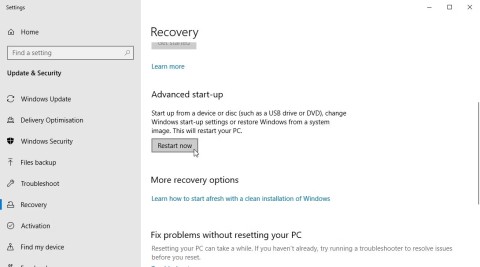Transporting bulky goods presents a unique set of challenges. Whether you’re moving furniture, heavy machinery, construction materials, or large appliances, ensuring that these items reach their destination safely, on time, and without unnecessary expense requires a carefully thought-out approach. This guide will explore the most effective strategies for transporting bulky items, from choosing the right transportation method to working with professional services. We'll also take a closer look at how modern digital tools can help streamline the process.
Understanding the Challenges of Transporting Bulky Goods
Bulky goods are generally defined as heavy, large, or awkwardly shaped items. These items don't fit neatly into standard shipping containers or vehicles, making them more difficult to transport. Common challenges include:
Size and Weight: Bulky goods often exceed the capacity of regular delivery vehicles, requiring special equipment or customized transportation.
Fragility: Many bulky goods are sensitive to impacts, weather conditions, or other environmental factors.
Cost: The logistics of transporting oversized items can be costly due to the specialized equipment, labor, and vehicles required.

Timing: Transporting bulky goods can take longer than standard shipments due to the complexity of loading and unloading.
Accessibility: Some items may need to be delivered to locations that are difficult to access, such as narrow streets or areas with limited parking space. With these challenges in mind, partnering with experts like Fullex Global can help you plan your transport strategy carefully to mitigate risk and ensure a smooth process.
Choosing the Right Transport Method
When it comes to transporting bulky goods, the first step is to choose the right transportation method. The type of vehicle and equipment required will depend on the size, weight, and nature of the goods you are moving.
Flatbed Trucks: These trucks are ideal for transporting large items that don't fit into traditional cargo spaces. Flatbeds allow for easy loading and unloading, especially for heavy machinery, construction materials, or furniture. The open nature of the flatbed means your goods are exposed to the elements, so it's important to secure them properly and, if necessary, cover them to protect against weather damage.
Box Trucks: Box trucks provide more protection for sensitive items, as they have enclosed spaces. They’re typically used for moving large, but less fragile, items such as household furniture, appliances, or electronic equipment. However, access to a box truck may be more limited compared to a flatbed, especially if the delivery destination has narrow roads or limited parking.
Specialized Vehicles: For extremely heavy or oversized goods, such as industrial machinery or construction equipment, specialized vehicles like low loaders or heavy haulage trucks are necessary. These vehicles are designed to carry massive loads and often require professional drivers with specialized training.
Shipping Containers: If you're transporting goods over a long distance or internationally, shipping containers may be the best solution. These large, sturdy containers are designed to protect goods from damage during transit. Depending on the size of your goods, you may need a larger container or multiple containers to accommodate the load.
Air Freight or Rail Freight: In some cases, air freight or rail transport might be the best option, particularly if speed is crucial or your bulky goods need to travel vast distances. While these methods tend to be more expensive, they offer speed and reliability, especially when the shipping time is limited.
Safety and Security Considerations
When transporting bulky goods, safety should always be a top priority. Not only do you need to protect the items themselves, but the safety of the drivers, other vehicles, and pedestrians must also be considered. Some important safety measures include:
Proper Loading: Bulky goods should be carefully loaded to ensure they’re balanced and secured. If items are improperly loaded, they can shift during transit, leading to potential damage or accidents. Using strapping, ropes, and other securing equipment can help prevent movement during transport.
Weight Limits: Ensure that the vehicle and any other equipment being used can handle the weight of the goods. Overloading a vehicle can cause it to break down, damage the goods, or create hazardous situations on the road.
Insurance: Always check that your goods are insured during transit, especially if they’re valuable or fragile. Insurance will protect you from financial loss in case of damage or theft during transport.
Road Conditions and Restrictions: Many regions have laws and restrictions regarding the transport of bulky goods, particularly if the load exceeds certain size or weight thresholds. Be sure to check local regulations to ensure compliance and avoid penalties.
Monitoring the Transport: Consider using tracking systems to monitor the progress of your transport. Many transportation companies offer GPS tracking, allowing you to monitor the delivery's location and estimated arrival time. This feature is especially helpful when transporting valuable or time-sensitive goods.
Working with Professionals for Efficient Transport
For many people, the complexity of transporting bulky goods means that working with a professional logistics company is the best option. A professional service can handle all aspects of the transport process, including planning, equipment, and transportation.
One option for streamlining the process is using digital platforms to find professional transport services. Websites like www.shiply.com connect customers with a network of transporters who specialize in moving bulky goods. Shiply allows users to obtain quotes from multiple transport providers, compare services, and choose the best option for their needs. This kind of platform offers great flexibility and can often save money by connecting you with providers who have available space on existing routes, reducing the cost of your shipment.
The Role of Technology in Bulk Transport
Technology plays a significant role in modern bulk transport logistics. Digital platforms like Shiply allow customers to access a range of services, compare prices, and track their goods in real time. This saves both time and money by streamlining the process of finding reliable transport providers.
Furthermore, technologies such as GPS, telematics, and route optimization software can help improve the efficiency of bulk transport. These technologies help drivers avoid traffic congestion, optimize fuel usage, and reduce delivery times. For those shipping goods over long distances, these innovations help ensure that goods arrive safely and on time.
Conclusion
Transporting bulky goods doesn't have to be a daunting task. With the right strategy and resources, you can ensure that your goods are transported safely, efficiently, and cost-effectively. Planning is key, whether you choose to do it yourself with the right equipment or work with professionals through a platform online. By considering all aspects of the transport process, from selecting the appropriate transport method to ensuring safety and security, you can make the transport of bulky goods a smooth and stress-free experience.
With the right tools and resources at your disposal, transporting bulky items doesn't have to be a headache. Whether you're moving locally or across the country, the right professional service and smart use of technology can help make your bulky goods transportation hassle-free.















